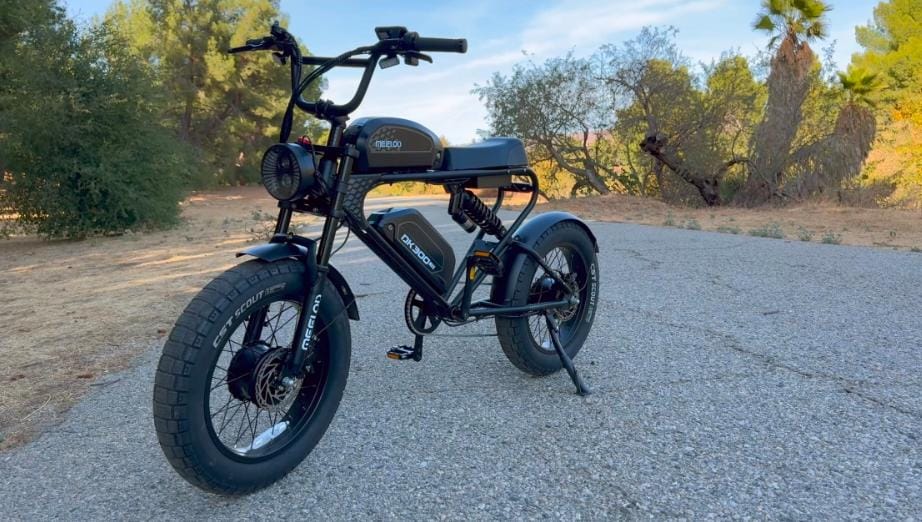Fat Tire vs Standard E Bikes Which Ride Fits Your Lifestyle

Buying an electric bike sounds easy until two very different tire shapes stare back from the screen. A fat tire e bike promises smooth travel over sand and snow, while a standard e bike feels lighter and quicker on clean pavement, leaving many riders stuck on which way to go.
This guide sorts the differences into plain language and shows where each bike shines, so you can pick the ride that truly fits your daily routine.
Quick Look Table
| Feature | Fat Tire E Bike | Standard E Bike |
| Tire width | About 4–5 inches | About 1.7–2.4 inches |
| Best ground | Sand, snow, gravel trails | Pavement, packed paths |
| Ride feel | Soft and steady | Light and quick |
| Bike weight | 70 – 90 lb | 50 – 70 lb |
| Battery use at 20 mph | Higher | Lower |
| Storage space | Bulky | Slim |
| Typical starting price* | Around $1,200 | Around $900 |
Key Differences
Fat tire e bikes and standard e bikes share motors and batteries, yet each style handles the road in its own way. Knowing these points makes the choice far easier.
- Grip: Wide tread spreads weight and bites into loose ground, while narrow tread saves energy on smooth roads.
- Rolling effort: Fat tires need more power to hold the same speed; slim tires glide farther per watt.
- Handling: Fat tires track straight and feel calm on rough paths; slim tires turn faster and weave through city traffic with less effort.
Which Bike Fits Your Routine
City Errands and Short Rides
A standard e bike darts through traffic and parks in tight racks. Its lighter frame lifts easily over curbs and into the office.
Dirt Paths and Beach Days
A fat tire e bike glides over sand, snow, and loose gravel where slim tires sink. Lower pressure turns bumps into a gentle bounce, so wrists and back stay relaxed.
Wet or Cold Weather
Wide tread grabs slush and loose leaves. On clear but slick tarmac, narrow tires shed water quicker and keep rolling speed high.
Small Apartments or Lift Access
If you carry the bike upstairs, less weight and a slimmer bar help. Standard tires fit hallway corners better, while fat tires can scrape walls unless you plan the route.
Budget and Upkeep
Fat tires and bigger batteries cost more up front and when you replace them. Slim tires, tubes, and smaller packs save cash but give up cushion on rough ground.
Real Ride Notes
- Fifteen-mile city loop: A standard e bike needed 15 percent less battery and held an average of 18 mph, weaving past cars with ease.
- Seven-mile beach cruise: A fat tire e bike rolled steady at 12 mph, soaking up soft sand without a wobble, while a slim-tire bike bogged down after two miles.
Five-Point Buying Checklist
Before you hit “buy,” tick these five boxes to match the bike to your life.
- Tire width and ground – Choose fat tires if you ride sand or snow most days, slim tires if you stay on clean pavement.
- Motor torque – Steep hills or heavy cargo need at least 70 Nm; flat routes work fine with less.
- Frame size – Stand over the top tube with an inch of space and reach the bars without stretching.
- Battery watt-hours per mile – Aim for 20 Wh per mile on a standard e bike, 25–30 Wh on a fat tire e bike.
- Local speed rules – Check class limits so your new electric bike stays street legal.
Meelod Choice
Want the wide-tire comfort with long miles between charges? The Meelod DK300 MAX gives you dual 750 W motors, a 1 920 Wh battery, and four-inch tread that stays firm on sand or gravel—see it at long-range ebike. If you lean toward lighter frames with slimmer tires, browse the rest of the adult electric line at meelod.com and filter by tire width to compare weight and price.
Final Words
Fat tire e bikes win on loose ground and comfort, while standard e bikes keep weight down and glide on clean pavement. Match the tire width to where you ride most, balance motor torque with range, and keep local speed rules in mind. A quick test ride of both styles will show which one feels right for your daily life.
Do fat tire e bikes feel slow on asphalt?
They can, but a strong motor keeps speed close to a standard e bike. Many riders still cruise at 20 mph on flat roads.
Can I fit fat tires on a standard rim?
Usually no. Fat tires need wider rims and frames to clear the chainstays and fork.
Will wider tires void my warranty?
If the brand sells a fat tire kit for your frame, you are safe. Otherwise, changing wheel size often breaks the warranty terms.
What tire pressure suits a 200-pound rider?
Start at 20–25 PSI for fat tires and 50–60 PSI for standard tires, then adjust by two PSI at a time until the ride feels right.
